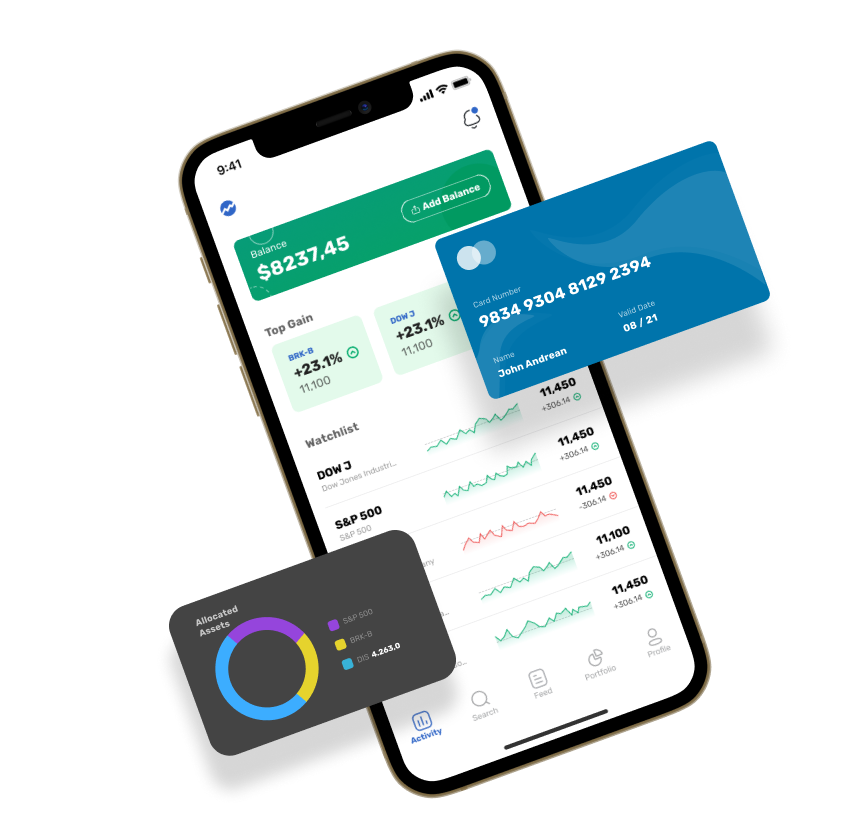The User Interface (UI), and User Experiences (UX) in AI trading platforms that forecast or analyze stock prices play a crucial function in ensuring efficiency as well as satisfaction. A poorly designed interface will hinder your decision-making process, even if you've got robust AI models. Here are 10 ways on how to evaluate the UI/UX.
1. Evaluation of user-friendliness and intuitiveness of use
Navigation: Ensure the platform is simple to navigate with clear menus, buttons, and workflows.
Learning curve - Assess how fast a user can learn the platform and grasp the platform without a lot of training.
Consistency: Search for the same design patterns (e.g., button designs or colors, etc.)) across the platform.
2. Check for Customizability
Dashboard customization: Check if dashboards can be customized to display charts, data and other metrics that are relevant to the user.
Layout flexibility: Make sure your platform permits you to reorder widgets, tables and charts.
Check the platform's dark/light options or visual preferences.
3. Visualize data easily
Quality of the chart: Make sure that the platform has interactive charts with zooming and panning functions (e.g. line charts, candlestick charts).
Visual clarity: Check if the information is clearly presented and is labeled appropriately, legends, and tooltips.
Real-time updates: Verify that the visualizations are being updated in real-time, to reflect changes on the market.
4. Test for Reactivity and Speed
Speed of loading: Ensure that the platform is loaded quickly, even when handling large data sets or complicated calculations.
Real-time performance: Confirm that the platform is able to handle data feeds in real time without any lag or delay.
Cross-device Compatibility: Verify whether the application works with other gadgets (desktops or mobiles).
5. Examine Accessibility
Mobile App: Make sure the platform provides a mobile trading app that offers full functionality.
Keyboard shortcuts - Make sure the platform has keyboard shortcuts for advanced users.
Accessibility Features: Determine if the platform adheres to accessibility standards.
6. Review the search and filtering functionality
Search performance: Make sure the platform allows users to quickly search for the indices, stocks or other assets.
Advanced filters: Check whether users have the ability to apply filters (e.g. by market cap, sector, performance metrics) to narrow results.
Saved search: Check if the platform allows users save frequently used searches and filters.
7. Look for Alerts, Notifications and Other Information
Customizable alerts. Users should be able to set alerts for specific conditions (e.g. price thresholds or spikes in volume).
Delivery of notifications: Check whether notifications can be sent via multiple channels (e.g. email, SMS and app notifications).
Timing: Make sure that alerts are sent promptly and accurately.
8. Connect to other tools
Broker integration: Ensure your platform seamlessly integrates with your brokerage account for ease of execution of trades.
API access: Check if the platform offers API access to advanced users to create custom tools or workflows.
Third-party interfaces: Make sure you know if the platform supports integration with third-party tools (e.g. Excel or Google Sheets) and trading robots.
9. Take a look at the Help and Support Features as well as the Support Features.
Tutorials for onboarding: Find out if the platform provides instructions or walkthroughs for the new users.
Help center - Ensure that your platform has a complete support center or knowledgebase.
Customer support: Check whether the platform has responsive customer support (e.g. email, live chat, phone).
10. Test User Experience Overall
User feedback: Research reviews and testimonials to assess general satisfaction of users with the platform's interface and user experience.
Free trial period: Try the platform at no cost and assess its effectiveness.
How does the platform deal with edges and errors?
Bonus Tips
Aesthetics Functionality is important, but aesthetics are important, a pleasing design can improve the overall experience for users.
Performance under pressure Test the platform in extreme market volatility to ensure it remains stable and agile.
Forums and communities: Find out whether the platform hosts an active community of users or forum for users to share tips and feedback.
Follow these tips and you can assess the UI/UX of AI-based stock prediction/analysis trading platforms. They'll be user-friendly, efficient, and also suited to your needs in trading. A well-designed UI/UX improves your ability make informed decisions and perform trades effectively. Have a look at the top ai stock trading info for site info including chart ai trading assistant, best ai trading app, ai investment platform, ai stock trading bot free, ai for stock predictions, stock ai, ai for stock trading, best ai trading app, ai for investing, chatgpt copyright and more.

Top 10 Ways To Assess The Authenticity Of Trading Platforms Using Artificial Intelligence Which Predict Or Analyze Stock Prices
Transparency is an important aspect to consider when evaluating AI trading and stock prediction platforms. Transparency ensures users can trust platform operations, understand the decisions made, and validate the accuracy of predictions. Here are the top 10 methods to assess the degree of transparency that these platforms offer.
1. A clear explanation of AI Models
Tip: Make sure the platform provides information on AI models and algorithms used to predict.
Understanding the technology's foundation lets users evaluate its credibility.
2. Disclosure of Source Data
TIP: Make sure the platform makes public its data sources (e.g. historical stock data or social media).
The reason is that knowing the source of information ensures that the platform uses reliable and accurate information.
3. Performance Metrics & Backtesting Results
Tip: Look for transparent disclosure of performance indicators (e.g. accuracy rates, ROI) and backtesting results.
This gives users to compare the performance of their previous platforms with those on the current platform.
4. Real-time notifications and updates
Tips. Find out if your platform can provide real-time information as well as notifications about trades and changes to the system, like trading predictions.
Why: Real-time visibility ensures that users are alert to critical actions.
5. Transparency in Communication regarding Limitations
Tip: See if your platform explains the limitations and potential risks of the trading strategies it uses and the forecasts it makes.
Why: Acknowledging limitations builds trust and allows users to make educated choices.
6. Raw Data is available to users
Tips: Determine if users have access to raw data or intermediate results utilized by AI models.
Why? Because the raw data are available to users for their own analysis.
7. Transparency of Fees and Costs
TIP: Ensure that all subscription fees, charges and possible cost-savings are clearly stated on the platform.
Transparent pricing builds trust and helps avoid surprises.
8. Reporting on a regular basis and audits
Find out if the platform produces regular reports, or undergoes audits conducted by third parties to check its performance.
Independent verification increases credibility and accountability
9. Explainability of Predictions
Tip Check to see whether there is an information on how the platform makes certain predictions and suggestions (e.g. features with priority and decision trees).
Explainability is a software that helps users to understand AI-driven decision-making.
10. Customer Feedback and User Support Channels
Tips: Find out whether there are clear channels for users to share their feedback and also receive assistance. Also, check if it is transparent in its response to concerns that users have raised.
The reason is that responsiveness in communication is a sign of commitment to transparency.
Bonus Tip Regulatory Compliance
Be sure that the platform follows to and is open about its compliance with financial regulations. This adds an additional layer of confidence to the platform.
When you evaluate these features, you can decide if an AI trading platform or predictions of stocks are reliable. It will then be able to make well-informed decisions and have confidence in the capabilities of AI. Have a look at the best my review here about how to use ai for copyright trading for blog info including ai in stock market, ai tools for trading, ai stock price prediction, best stock prediction website, ai software stocks, chart analysis ai, stocks ai, ai options trading, ai investment tools, best ai for stock trading and more.
